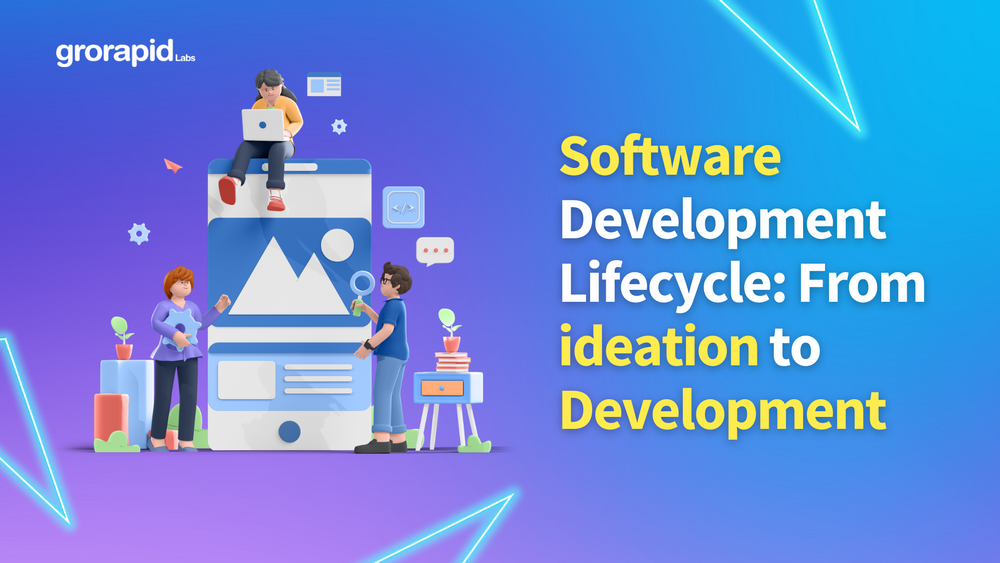Software development lifecycle: From ideation to deployment
When you are new to software development you don’t know where to start. Releasing a product in the market is not just about how good your code is, but it’s more about does it matches the user’s requirement or not. To achieve that, a product goes through various phases of development which include requirement analysis to implementation of the code and after that testing and continuous evolution of the product.
When you hear the term Software Development Lifecycle, there are some questions that come up in your mind. Generally, they are:
What is SDLC?
How is SDLC going to benefit you?
What are the phases of SDLC?
What are the different models of SDLC?
In this guide, we’ll cover all these questions in such a manner that it will help you to get an understanding of what and how SDLC plays an important part in the development of the product. So, let’s get started.
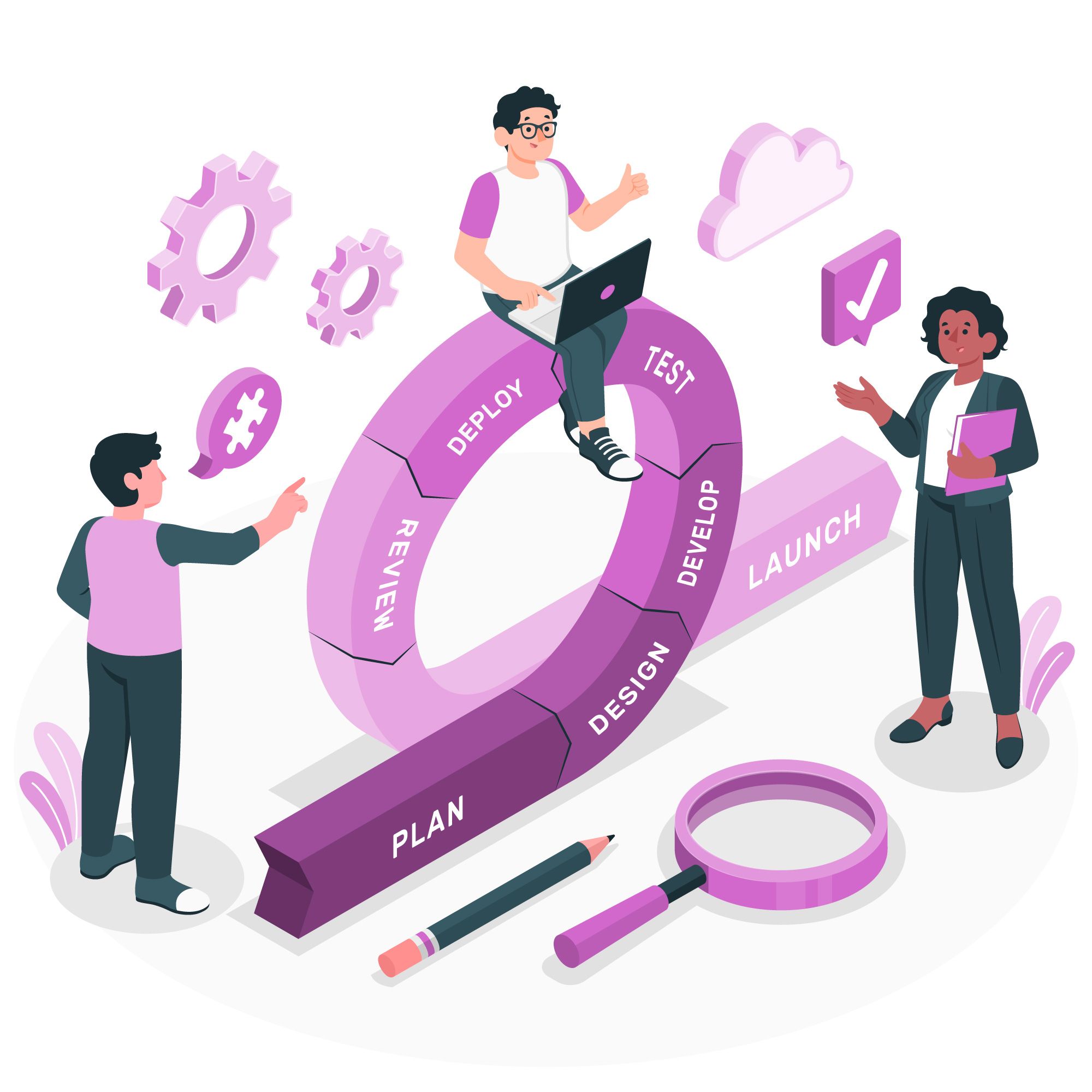
What is SDLC?
The software development life cycle (SDLC) is a structured process used to design, develop, and test good quality software. The SDLC lifecycle model's objective is to produce maintainable, high-quality software that satisfies user expectations.
In software engineering models, the term "software development lifecycle" refers to the planning that goes into every stage of the software development model so that each phase may successfully complete its work and deliver software at a reasonable cost and within a certain time period while meeting user requirements.
Benefits of the software development lifecycle
Implementing a well-structured Software Development Life Cycle (SDLC) will be instrumental for your software venture. It ensures systematic planning, efficient execution, and high-quality output which adds value to your product. SDLC fosters clear communication, minimizes errors, and maximizes resource utilization, ultimately leading to timely deliveries. It also makes it easier to react to changing requirements and enhances overall project agility.
SDLC provides you with a competitive edge by developing trust within your customers and stakeholders. Furthermore, it lays the groundwork for scalability and prepares you for future development and success in the volatile software market.
Phases of software development lifecycle
Software Development Life Cycle(SDLC) is a systematic structure that outlines the stages necessary for creating high-quality software.
It is separated into several phases, each with its own set of tasks and goals. Let's look at the five essential SDLC stages and their importance in the software development process.
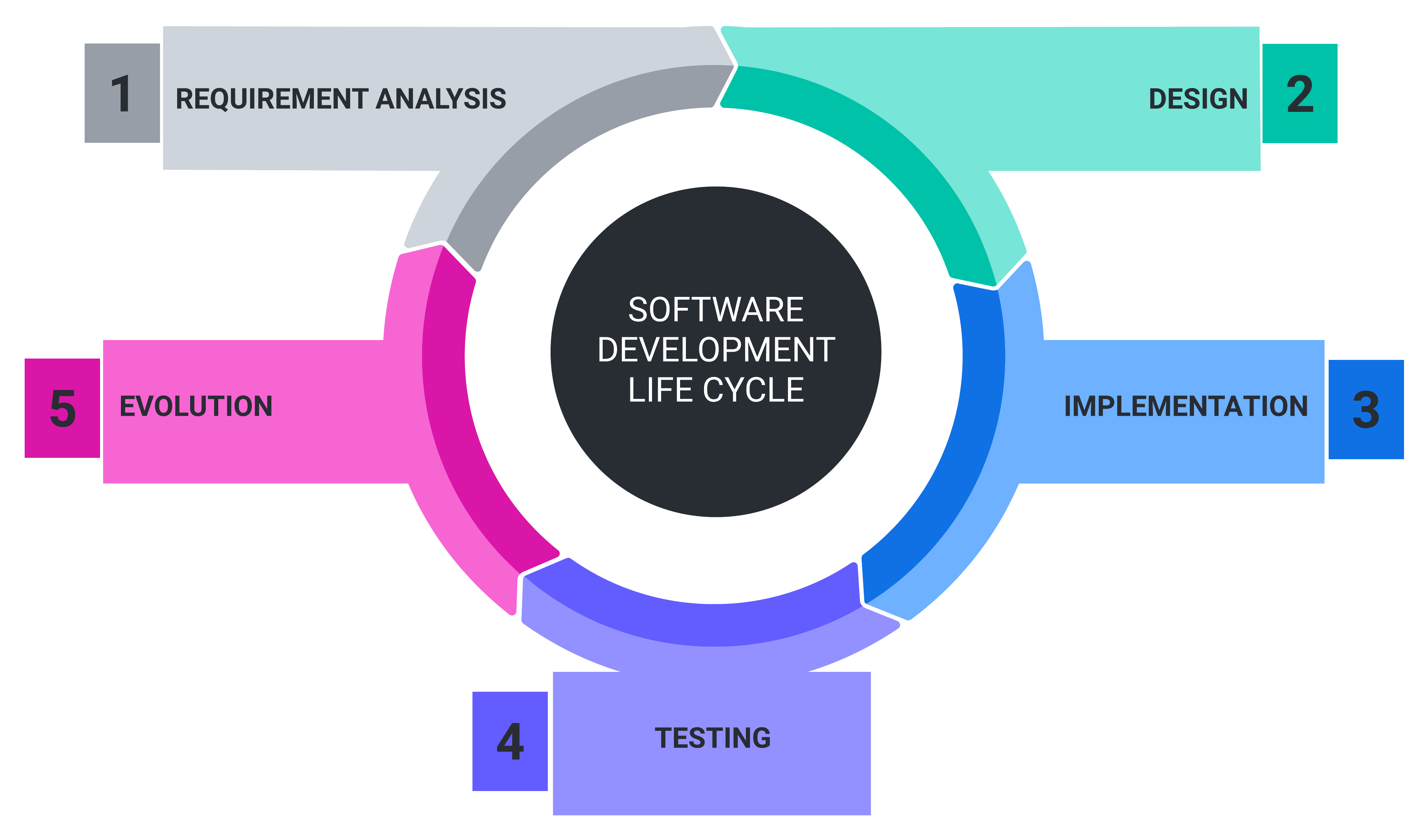
1. Requirement analysis
The first phase of SDLC is Requirement Analysis, which forms the foundation of the entire development process. During this phase, project partners including users, business analysts, and developers work together to collect and analyze a variety of information on the purpose, features, and capacity of the project.
The primary goal of requirement analysis is to understand the pain points and needs of the client.
This includes conducting seminars, user interviews, and surveys to acquire information on specific requirements. These specifications cover both functional (what the program should be able to accomplish) and non-functional (performance, security, and usability criteria) requirements.
A crucial result of this stage is the creation of an exhaustive Software Requirements Specification document. This SRS document serves as a reference point all through the development process, ensuring that the finished project aligns with the user's requirements.
2. Design
The second phase which comes after requirement analysis is designing, which involves putting the acquired requirements into a design for the software's architecture. System architects and designers work together during this phase to produce a comprehensive technical design document.
The system's architecture, including its hardware and software parts, database architecture, and overall system architecture, is described in the design paper. It also addresses user interface design, delivering a simple and straightforward experience.
The development team will have a clear path for creating the software by the time this stage is over. The design document acts as a roadmap to ensure that development efforts are in line with the product's objectives.
3. Implementation
The implementation phase starts once the design is complete. Here is where the actual programming and coding happens. Based on the parameters specified in the design document, knowledgeable developers construct the code.
Throughout the deployment, attention to code guidelines and industry standards is crucial. This ensures that the code is readable, maintainable, and scalable. To solve problems and make sure the development process goes well, team members must work together continuously.
4. Testing
The software reaches the testing phase after the code has been written. This stage focuses on locating and fixing any bugs or flaws in the code. To verify that the software performs as intended, quality assurance (QA) engineers test it using a variety of methods, such as application security testing, unit testing, integration testing, and system testing.
Verifying that the program satisfies the requirements and is free of serious problems is the aim of testing. A high-quality final product that meets or exceeds the client's expectations is ensured through rigorous testing.
5. Evolution
The SDLC's Evolution phase, commonly referred to as maintenance, is the last stage of the software development lifecycle. Beyond the software's first deployment, this phase continues. It entails continuing maintenance, updates, and improvements to deal with any problems that could come up during actual use.
Bug fixes, performance enhancements, security upgrades, and the inclusion of new features or functions in response to user input and changing requirements are all examples of maintenance.
We’d love to learn more about your team and the challenges in your current workflow.
Models of software development lifecycle
As there are different phases of Software Development, there are also different models of these lifecycles that the companies follow as per their requirements and analysis of the project. When you choose what model would be best for you, there are several factors that you might take into consideration such as the budget of the project, the timeline of the project, and most importantly which type of project are you developing. The models of SDLC which are used by companies are listed below.
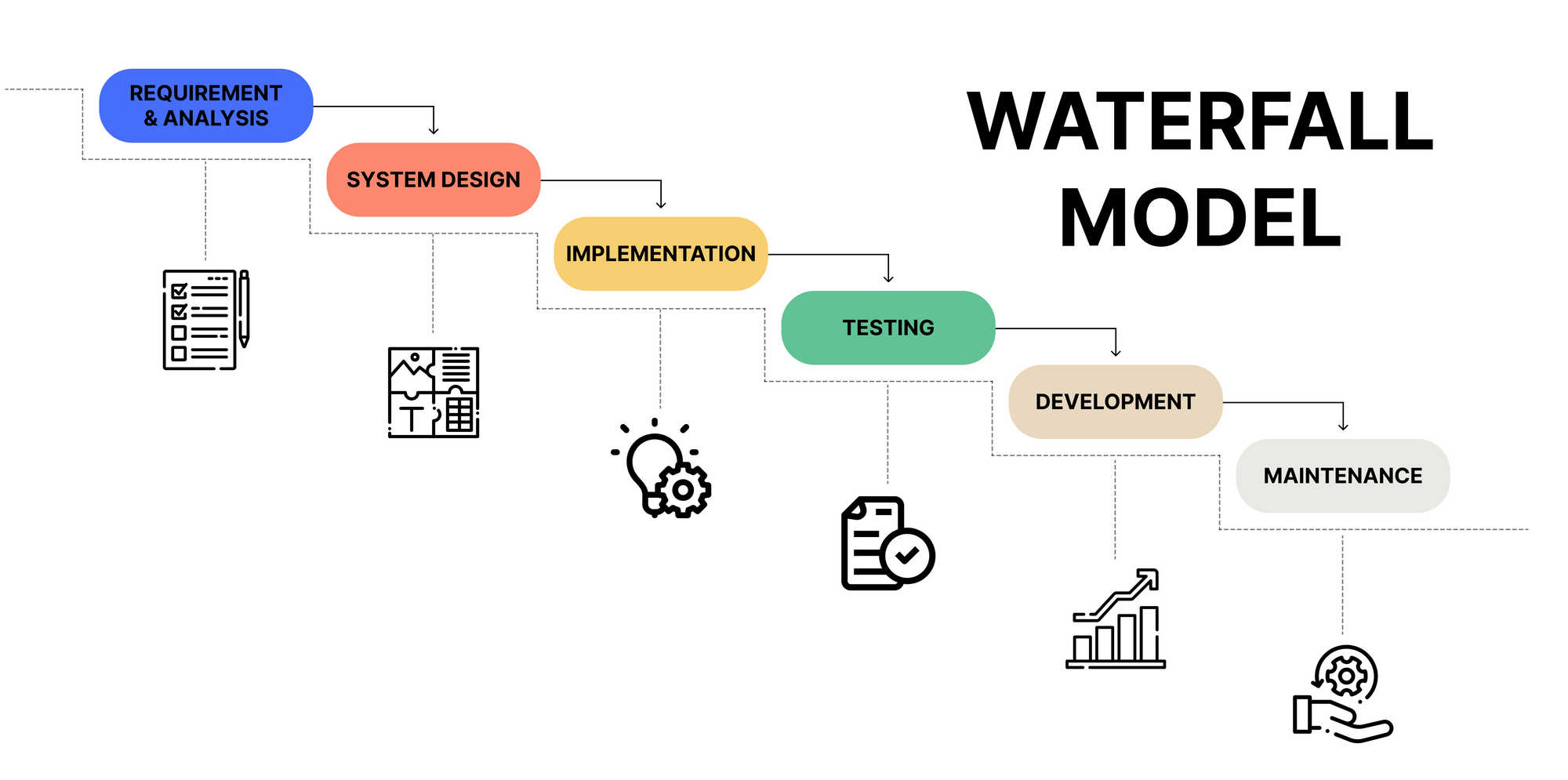
1. Waterfall model
The Waterfall model is a linear and sequential approach to software development. It consists of various phases (requirements, design, implementation, testing, deployment, and maintenance) where each phase must be completed before the next one begins. This model is best suited for software that has well-defined, stable requirements and a clear understanding of the end product which have to be delivered.
Use when:
- When you have well-understood the requirements and they are unlikely to change.
- The project is relatively small and straightforward.
- Strict regulatory or compliance requirements necessitate a highly structured approach.
2. RAD model (Rapid Application Development)
The RAD Model works on rapid prototyping and iterative development. It usually involves developing small portions of the system in parallel. This model is ideal for software whose requirements are changing rapidly and where getting a working prototype in front of stakeholders quickly is essential.
Use when:
- Requirements are subject to change or not well-defined in the initial briefing.
- Quick delivery is essential, and stakeholders need to see progress at every stage.
- The project can be divided into smaller, and independent modules.
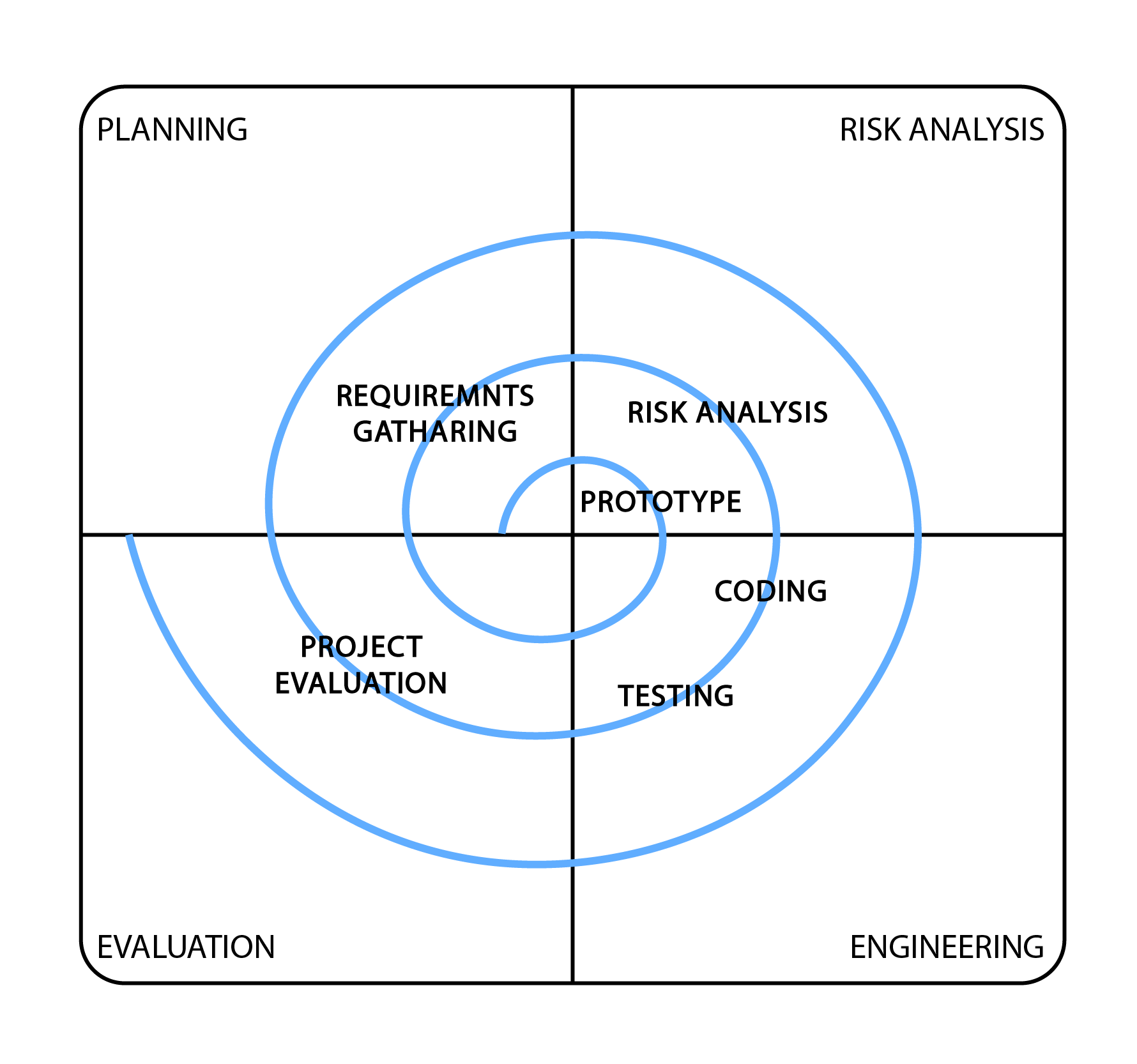
3. Spiral model
The Spiral Model combines elements of both the Waterfall and iterative models. It involves repeated cycles, or "spirals," of planning, risk analysis, engineering, and evaluation. Each cycle of this model results in an improved version of the software. This model is best suited for software with high-risk factors and changing requirements.
Use when:
- The project involves significant uncertainty or complexity.
- There are evolving requirements and a need for continuous risk assessment.
- A flexible and adaptable approach is crucial.
4. V model
The V Model, also known as the Verification and Validation model, is nothing but an extension of the Waterfall model. It emphasizes the relationship between each development stage and its corresponding testing phase. You should use it for software where testing and validation are of utmost importance.
Use when:
- Clear and well-defined requirements exist.
- Emphasis on thorough testing and validation is critical.
- The project scope and requirements are relatively stable.
5. Incremental model
The Incremental Model involves dividing the software into small, manageable parts, or increments. Each increment represents a portion of the system's functionality. It's an iterative approach where new features are added incrementally. This model is beneficial for software that can be divided into distinct functional components.
Use when:
- Early delivery of partial functionality is essential.
- Stakeholders want to see tangible progress at regular intervals.
- The project can be divided into independent modules or features.
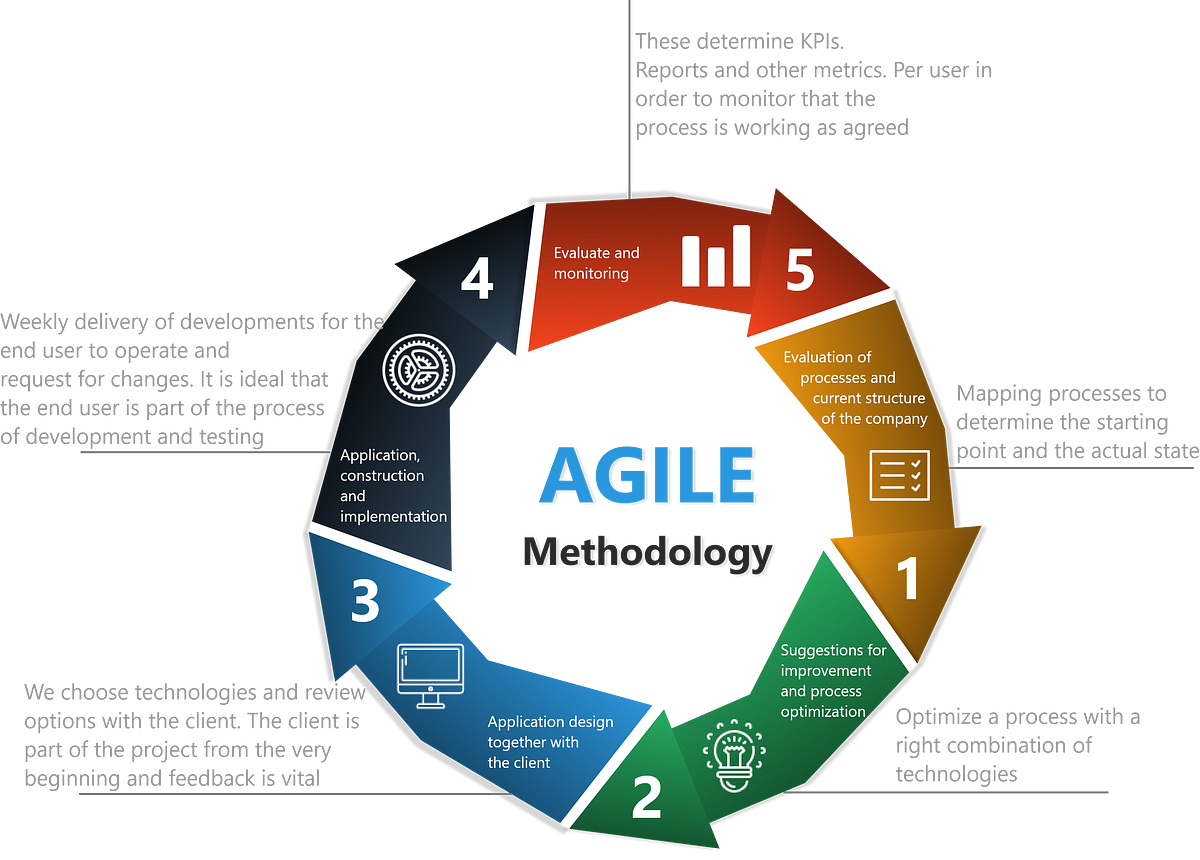
6. Agile model
Agile is an iterative and collaborative approach that prioritizes flexibility and customer collaboration. It emphasizes delivering a minimum viable product (MVP) quickly and continuously iterating based on user feedback. It's well-suited for software with evolving or unclear requirements.
Use when:
- Rapid adaptation to changing requirements is critical.
- Continuous customer involvement and feedback are essential.
- The project benefits from early and frequent releases.
7. Iterative model
The Iterative Model involves repeating cycles of software development, with each cycle building upon the previous one. Each iteration produces a partial, working version of the software. It's beneficial for software where the requirements are likely to evolve over time.
Use when:
- The project involves complex or dynamic requirements.
- Continuous refinement and improvement are required.
- Stakeholders are open to regular iterations and feedback loops.
8. Big Bang model
The Big Bang Model is an unconventional and high-risk approach where development begins with minimal planning or structure. It's suitable for small products or experimental efforts where a flexible, exploratory approach is endorsed.
Use when:
- The project scope and requirements are highly uncertain.
- The primary focus is on exploration and experimentation.
- The project is relatively small in scale and complexity.
The overview provided above shows that there are different types of software development life cycles available today to help IT companies reduce their engineering costs, save time and money, and make better decisions.
As a development agency, Grorapid for the past 10+ years has been helping organizations in choosing the right engineering model for them on the basis of their budget and user requirements. We would love to do the same for you too.
Still confused in choosing what would be the right engineering model for you? Let us help you there.
FAQs
- Is SDLC applicable to all types of software products?
Yes, SDLC can be customized to suit any type and size of software products, from small applications to large-scale enterprise systems. - What role do stakeholders play in the SDLC process?
Stakeholders are important in defining software requirements, providing feedback, and making critical decisions throughout the SDLC phases. - How does SDLC adapt to agile development methodologies?
Agile methodologies incorporate iterative approaches within the SDLC framework, allowing for flexibility and continuous improvement. - What happens if a critical issue arises after deployment?
The maintenance phase of SDLC addresses post-deployment issues, ensuring that updates and improvements are implemented promptly. - Can SDLC be automated for greater efficiency?
Yes, various tools and platforms are available to automate certain aspects of the SDLC, streamlining the development process.
JIRA, GitHub, and LinearB are some examples of these tools.
Do you have "a" million dollar idea, but still thinking about where to start with? Let's figure it out together.

